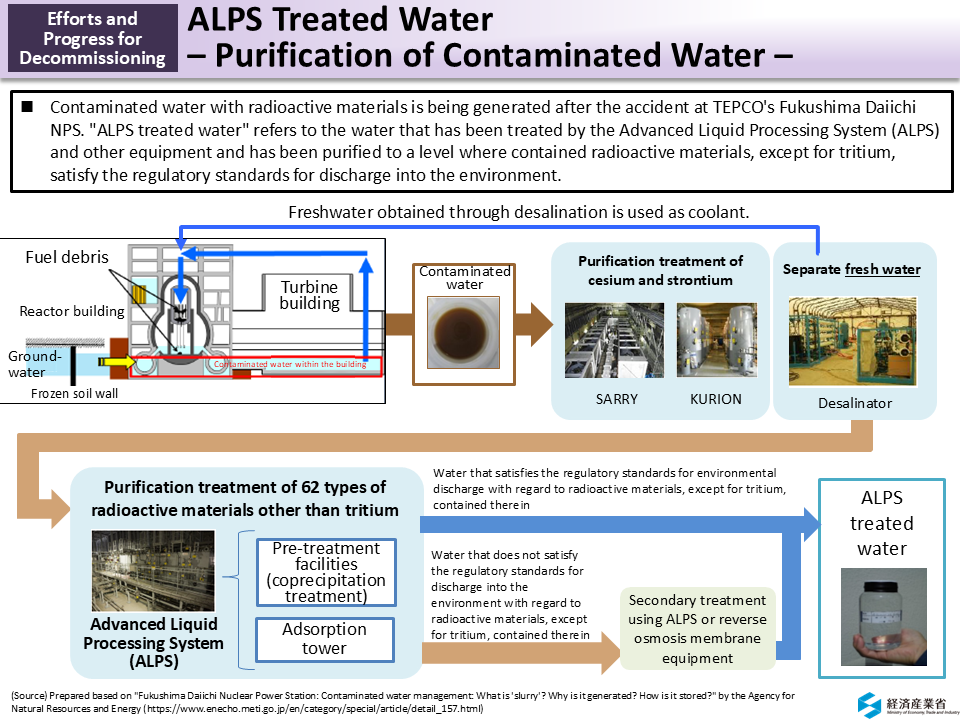ALPS Treated Water - Purification of Contaminated Water -
Contaminated water with radioactive materials is being generated after the accident at Tokyo Electric Power Company (TEPCO)’s Fukushima Daiichi NPS. “ALPS treated water” refers to the water that has been treated by the Advanced Liquid Processing System (ALPS) and other equipment and has been purified to a level where contaminated radioactive materials, except for tritium, satisfy the regulatory standards for discharge into the environment.
At TEPCO's Fukushima Daiichi NPS, as water is being injected continuously in order to cool melted and solidified fuel left within the reactor (fuel debris) and due to the inflow of rainwater and groundwater into the reactor building, water containing radioactive materials at high concentrations continues to be generated.
For such contaminated water, purification is conducted to remove radioactive materials using multiple types of equipment for the purpose of reducing the risks posed thereby. First, cesium and strontium are purified by the use of devices called SARRY and KURION. Then, the water goes through a desalination system and fresh water is separated and later used for cooling the reactor. The concentrated water is purified using ALPS to a level where the targeted 62 types of radioactive materials, except for tritium, satisfy their regulatory standards. Radioactive materials such as cesium, strontium, iodine, and cobalt are purified by ALPS through co-precipitation treatment using solutions and adsorption on activated carbon and adsorbents. Almost all radioactive materials are removed through repeated treatment by ALPS, but tritium, which is a radioisotope of hydrogen, exists as a part of the water molecule and cannot be removed through treatment by ALPS and other equipment.
Water treated in this manner has been stored in tanks installed within the premises of TEPCO’s Fukushima Daiichi NPS. However, as of December 2024, approximately 70% of the water stored in tanks still contained radioactive materials at concentrations exceeding the regulatory standards, in addition to tritium, due to such reasons as failures in purification equipment that occurred in the past and emergency purification treatment prioritizing the treatment amount in order to promptly reduce the impact of contaminated water on the surrounding areas. For such approximately 70% of the stored water, further treatment is to be conducted using ALPS or using reverse osmosis membrane equipment until it meets the definition of “ALPS treated water” which satisfies the regulatory standards for discharge into the environment other than tritium. (Related to p.14 of Vol. 2, “Treatment Method for Water Stored in Tanks”)
- Included in this reference material on March 31, 2022
- Updated on March 31, 2025

